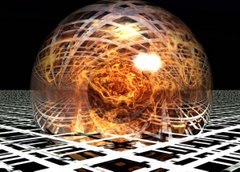
Throughout the human life cycle, questions arise that require deep contemplation and self-realization. Self-analysis is important when one is attempting to understand his or her role throughout life, and to help resolve difficult situations. However, in certain situations professional help may be required beyond what this exercise can do for a person. For several years, I have used transcendental meditation to release negative energy and clear my mind of obstructions that prevent me from attaining my goals. An individual can use meditation to restructure his or her current thinking method, thereby improving any undesirable behaviors. This type of therapy can be practiced alone, and is a useful tool in effectively learning life’s lessons. There are many different forms of meditation, but there is a basic design in reconstructing one’s thought process. This process results in a rebirth, or a refreshed outlook on life. Three basic steps are involved: ego-loss, transcendence, and re-entry.
The first stage in a general overview of meditation is the loss of the ego, or identity. This can be considered a shedding of old ways. One of the most important variables in this process is setting and environment. A comfortable, well-known location is an ideal setting. Some people find it easier to establish peace of mind in silence, although others prefer relaxing music to help center their attention. The object of this step is to disconnect with your physical reality and separate the mind from the body. This causes the subject to enter a state in which all his or her attention is focused on one thing, whether it be a mantra, breathing, heartbeat, the mandala, or just pure consciousness. The Buddhists and Hindus call this “The blowing out of the candle.” The chattering mind must be silenced. It is appropriate to lie down or sit in an upright position, depending only on personal preference and comfort. One method is to focus one’s attention on an item or position in the room. There are also various breathing methods that will aid in deep concentration. A common way to focus attention is to cleanse the body by imagining negative energy as a specific color and push it up from the toes to the head, and out into the atmosphere. This step is to free the mind of its ordinary patterns. If the mind has been cleared and focused, transcendence is attainable.
The second phase of reconstruction is transcendence. This is where the person has fallen into a deep state of relaxation and meditation. At this point, the mind is inattentive to distraction and open to the subconscious. This allows hidden wants and needs buried deep in the psyche to rise to the surface in the form of archetypal imagery. In today’s fast-paced society, we as humans tend to ignore our primary thoughts and fail to take the time to understand our true inner selves. A wide variety of psychological events can occur at this point, depending on the subject of the meditation. An array of emotions can overcome the person being affected. This is normal; it is most likely feelings that have been repressed. It is important that these emotions come out, because continued repression can lead to neurosis. Transcendence can be a beautiful experience. Often, in such a deep state of meditation, the individual will hear his or her innermost thoughts and sometimes even see visions that can later be interpreted to have higher meaning. At this point, it is important to avoid trying to understand what is happening, but simply to absorb as much as possible. When the mind tries to define the experience, the experience often ends. This stage is usually the longest out of the three, although time is an obscure and irrelevant concept in this state of consciousness.
Finally, the last and most important part of the process is re-entry. This step can also be considered the awakening. Heightened senses of awareness to one’s surroundings begin as they slip back into their normal mindset. The return should be taken slowly and naturally; it should be enjoyed. Now is the time to reflect on the previous experience and try to understand its meaning. Re-entry is crucial because it is the process of taking what has been learned from transcendence and integrating it into daily life. This is a moment where people have been known to change significant parts of their lives by actually visualizing the path they were on and becoming aware of all the obstacles they have created for themselves, and realizing how to remove those obstacles, whether they are internal or external. A feeling of confidence and security are often found in this stage. There is an abandonment of weakness and insecurity as the internal freedom expands over the mind. A balance of mind and body gives the person a renewed feeling of energy and can open new pathways for the resolution of the question or goal upon which the subject was meditating. These new feelings toward oneself and the world at large can be felt for weeks or even months afterwards.
This is just a general explanation of the practice of using meditation to heal the mind. Much of this process must be experienced to be completely understood. For each person these stages will vary, for the way we perceive and interpret our own experiences is subjective, although many people report similar experiences. It is wise to keep a journal to record these experiences; they can be shared with loved ones to help better understand the self and the subject’s relationships with others. Journaling also helps the subject recall the experiences and the lessons learned. Another good idea is to draw pictures of what was seen. The mind is powerful and has potential to heal itself and guide a person safely through most situations. This confrontation of the self leads to a more liberated outlook on life, as well as providing self-discipline. Applying this method of reconstruction can prevent falling into routines that can lead to monotony. To quote the great Ram Dass, “It is important to expect nothing, to take every experience, including the negative ones, as merely steps on the path, and to proceed.”



No comments:
Post a Comment